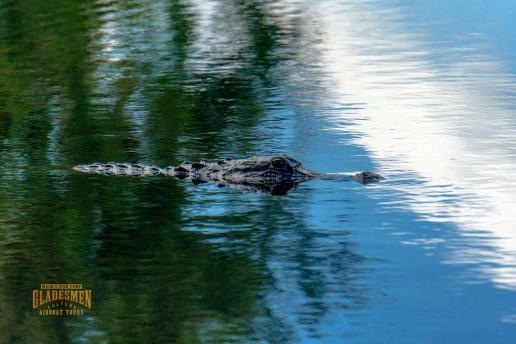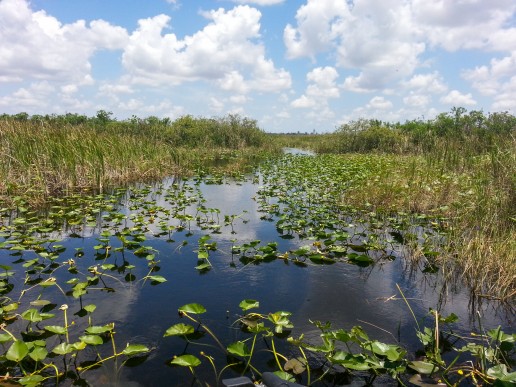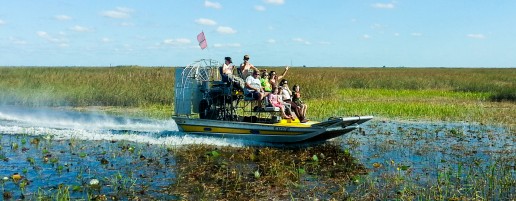Living with Alligators, A Florida History and How-To
To non-Floridians, the idea of living so close to alligators can sound exciting, scary or just plain wild. The novelty of it can bring unique challenges, too. But much like the endless summer weather, living with alligators is just part of life in Florida.
Alligators all over!
From marshes to rivers and swamps to lakes, alligators have resided throughout Florida for centuries. Spanish settlers & explorers in the 1600’s referred to them as el legarto (“the lizard”), and alligator became the English form of it. Alligators can be found in all 67 counties in Florida.
They’re solitary in nature, and tend to shy away from human contact. But as human populations grow steadily, the potential for interactions often occur. Alligators have been found in neighborhood lakes, backyards, garages, even swimming pools!
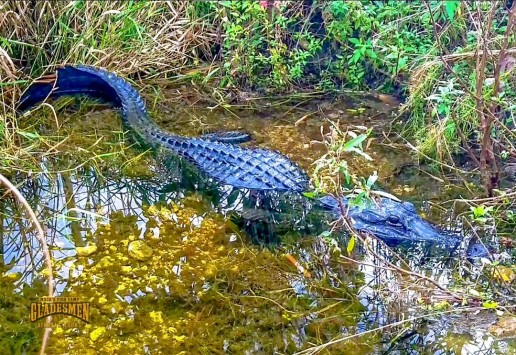
Should you encounter a gator that you believe could pose a nuisance to yourself, your pets, or property, you can call the Nusiance Alligator Hotline at 866-FWC-GATOR (866-392-4286). Alligators under four feet long generally aren’t considered to be a nuisance unless the caller believes it could be a threat. And also keep in mind that, nuisance alligators are killed, not relocated.
Some Alligator Safety Tips
Whether you’re a local living with alligators, or just looking to visit the Sunshine State, here’s some tips to be mindful of regarding gators.
- When camping or fishing, dispose of scraps in trash cans. Don’t discard them in the water, because you may be unintentionally feeding alligators.
- Never feed alligators. Doing so can make the associate people with food and become aggressive.
- Don’t swim outside of designated swimming areas or in waters that might be inhabited by alligators.
- If you’re bitten by an alligator, seek medical attention immediately. Serious infections can result if left untreated.
- And don’t bother alligators. Not only is harassing gators illegal, it can result in injury.
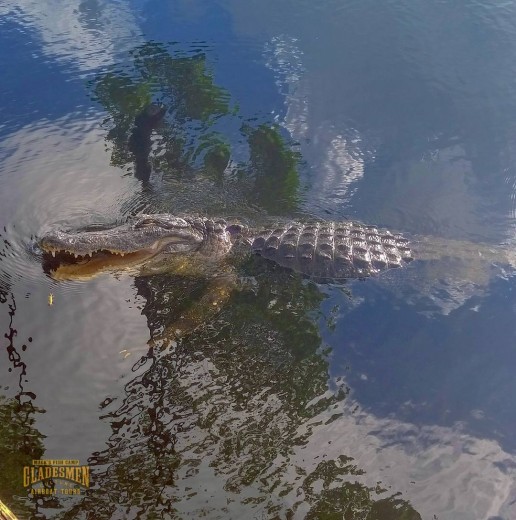
Alligators are a cherished member of not just the Everglades ecosystem, but the state of Florida as a whole. Living with alligators, they seem to pop almost anywhere in the state. But the best place to see them up close is in their natural habitat. Taking an Everglades airboat tour at Mack’s Fish Camp is a fun, safe way to learn about them and the role they place in the environment.
Experience Summer Adventure Year-Round in the Florida Everglades
There are plenty of reasons why South Florida is a popular travel destination. The gorgeous beaches and lively nightlife make visitors balk at the theme parks just over the horizon. A big factor for many tourists is the abundance of warm, sunny weather that seems to last all year. There’s only one experience in South Florida that’s as unique as the climate here: taking an Everglades tour!
Seasons in the Everglades
It definitely feels like summer in Florida for most of the year. But, the Everglades doesn’t really have a summer, or even four distinct seasons, just two! There is the wet season, which lasts from May through November, and the dry season, lasting from December through May. During the Everglades wet season, the Florida wetlands are replenished by heavy rains, and alligators nest and hatch their young. The dry season is defined by little rainfall, and peak activity of several species of Everglades birds like herons and egrets.
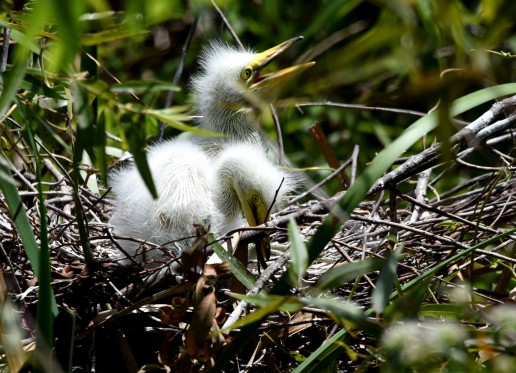
When is the Best time to Visit the Everglades?
The best time to take an Everglades tour can be a matter of preference. The dry season offers cooler temperatures, and the lower water levels and bird nesting concentrate Everglades wildlife into smaller areas. But many tourists visit South Florida at this time, and it gets very busy. During the wet season there are fewer crowds, but also higher temperatures and frequent rain.
Despite there being only two seasons in the Everglades, there are transition periods between them. Starting in October, a noticeable shift starts to occur, the rains become less frequent, and the heat is less intense. Also, a decrease in humidity brings a decrease in pesky, biting mosquitoes!
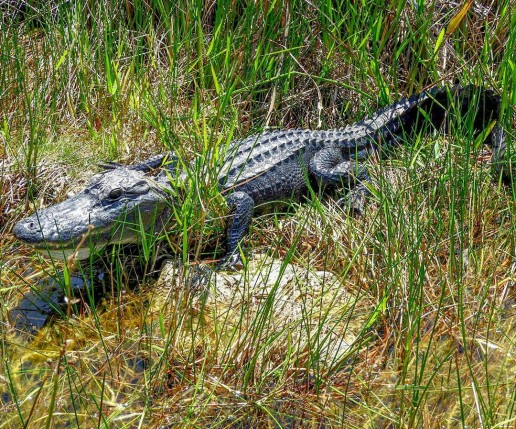
The Everglades wet season can get too hot for some, and the dry season can bring too many people. But, maybe there’s a time of year that’s just right for you. Miami in the fall doesn’t see the leaves changing colors, but the license plates start to! So before the holidays take a bite out of your budget, and snowbirds start arriving from across America and beyond, consider taking an Everglades tour in Miami this fall at Mack’s Fish Camp.
Wildlife Profile: Spiders in the Everglades
Spiders probably aren’t the first animal that comes to mind when you think of the Florida Everglades. But they are among the most abundant of Everglades wildlife, with 20,000 spiders for each of the 2 million acres here. Most of them go about their business unseen, and many are too small to be seen!
Spiders in the Everglades can be found hiding in the underbrush or are easily spotted by the webs they make in trees. Spiders are arachnids, not insects, so they all have eight legs instead of six, no antennae, and their bodies are divided into segments.
As scary as they look to some people, most spiders aren’t a threat to us, and only some are venomous. In fact, spiders are a cherished part of the Everglades food web, feeding on nuisance insects. Here are some species of spider you may spot on an Everglades tour at Mack’s Fish Camp.
Banana Spiders
Banana spiders are the species you’re most likely to see when you visit the Everglades. While the males are smaller and more dark-colored, the more colorful females measure three inches long, and are among the biggest spiders in North America.
These spiders are a type of orbweaver, and spin large circular webs to catch prey. A female’s web is made of golden silk similar to its color, and is three feet long. They feed on insects of all sizes, from mosquitoes to dragonflies. Banana spiders aren’t aggressive, and their bite isn’t harmful to humans.
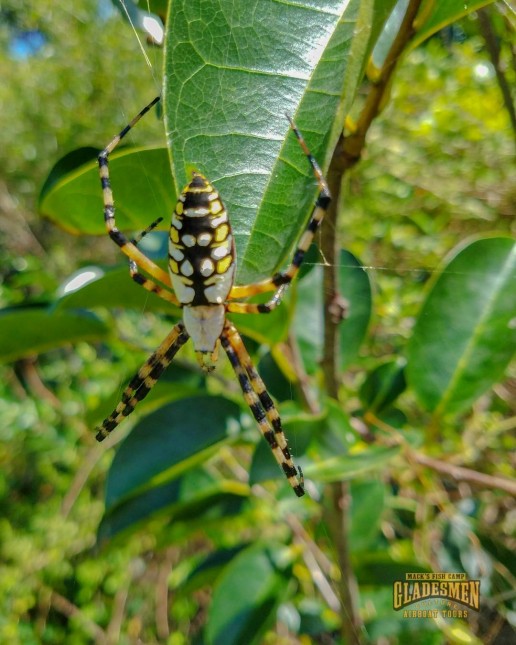
Fishing Spider (dolomedes triton)
This aquatic spider species spends nearly all of its time floating on or near water. In fact, fishing spiders can walk on the water’s surface and even dive underwater to catch prey. They hunt insects, tadpoles, even fish by sensing vibrations in the water, and then eat on dry land. Fishing spiders are dark gray to brown-colored, with two pale lines running the length of their bodies. Because the Everglades is a mostly aquatic ecosystem, fishing spiders are right at home in the sawgrass marshes and wet prairies.
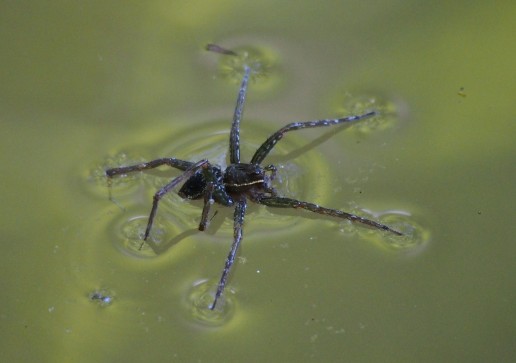
Red Widow
The red widow spider is a venomous spider with an orange-red body and a black abdomen with red spots. They’re fairly large, reaching 1.5 inches in length. Unlike its cousin, the black widow, it hasn’t been known to have ever bitten a person. However, they are known to have very potent venom. Red widows are endemic to Florida, found in the pine scrubs and pine rocklands. They make their nests in saw and scrub palmetto plants, and feed on large insects like crickets.
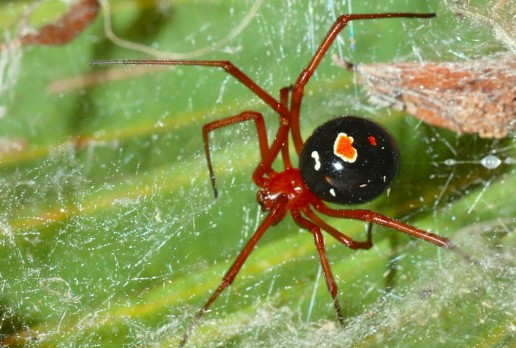
Brown Recluse
The brown recluse is one of the most venomous spiders in the Everglades, with venom as strong as the black widow’s. These quarter-sized arachnids not only make their webs, but seek out prey on the ground, such as cockroaches. Brown recluse spiders are not aggressive, and reports of them biting humans are rare. But they will bite if pressed up against someone’s skin, by leaning into one or when putting on clothing. Although, the strength of their bite varies, it can cause skin damage, loss of limb, and death.
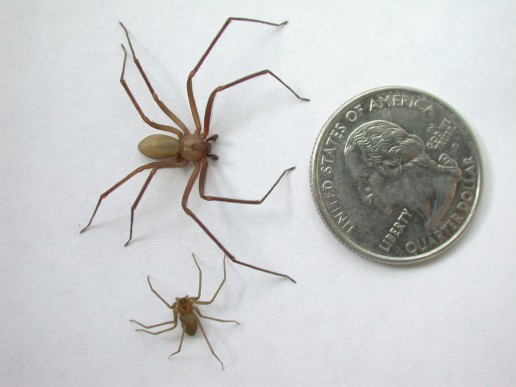
Crab Spiders
These small spiders are named for how they move by scuttling sideways, as a crab would. Most species are dark grey to black to camouflage themselves. Other species are brightly colored to hide inside flowers, wait to ambush their prey. Crab spiders do not spin webs to catch or wrap their prey, but feed immediately after attacking.
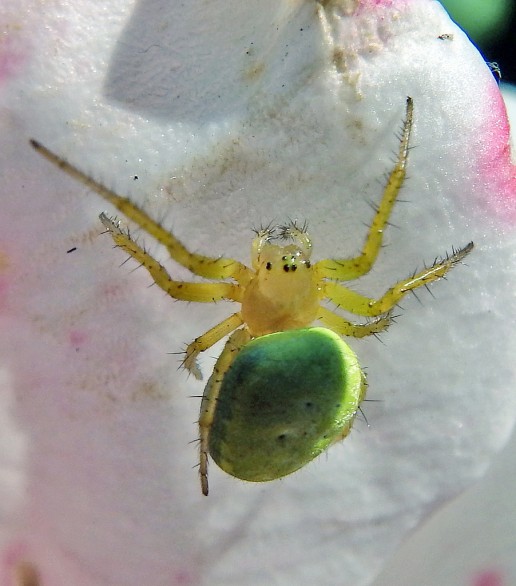
Spot Everglades Wildlife on an Airboat Ride
Spiders in the Everglades serve their role in this ecosystem, no matter how frightening of beautiful you might find them. On a private airboat tour at Mack’s Fish Camp, you’ll get to see them and many other Everglades wildlife species.
Why Take an Everglades Airboat Tour?
The Florida Everglades is a sprawling landscape, full of natural beauty. It’s so massive that it could prove a challenge to anyone trying to see all of it by just canoeing or camping. Everglades airboat tours at Mack’s Fish Camp can provide a more direct experience with what the River of Grass has to offer you.
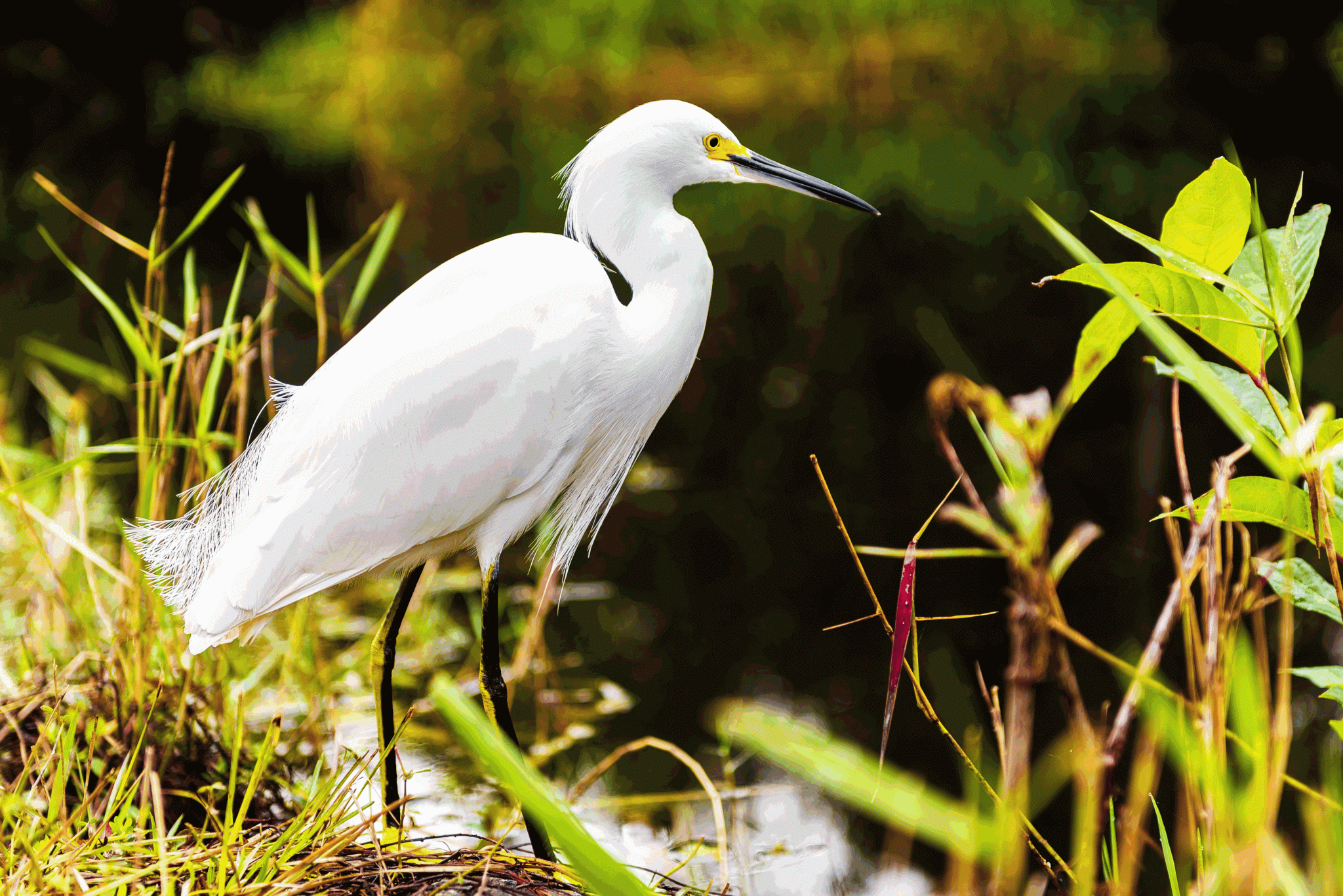
Being one of the most biologically rich habitats in the world, the Everglades are home to a wide variety, especially animal and plant life. There are many different bird species to be seen, especially wading bird. 16 different species of wading birds live in the Everglades, mainly those of ibis, egret, and heron.
Birds of Prey
Birds of prey are also a common sight as well. Raptors such as osprey and red-shouldered hawks can often be seen hunting lizards, snakes, rodents, and even fish during the day, with the more nocturnal barred owls appearing in the early evening.
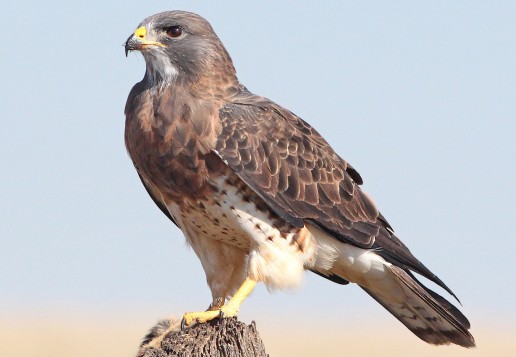
While there have been over 350 birds sighted in the Everglades, nearly 200 of them are migratory. Meadow larks, cardinals, red-bellied woodpeckers, and blue jays can be seen during the drier winter months before the rain season.
But, the most well-known creature out of all South Florida wildlife (No, not the Skunk Ape!) would have to be the American alligator. Even without the close-up views provided by Everglades airboat tours, alligators are a standout due to their size. Adult females can reach 10 feet in length, and males can max out at 13 to 15 feet.
"Alligators are considered a keystone species of the Everglades ecosystem."
Alligators are considered a keystone species of the Everglades ecosystem. The “gator holes” that they make in the marsh as a sort of nest, help remove old vegetation and enrich the soil for new growth. They can also serve as an oasis for other Everglades during the dry season, between November and April.
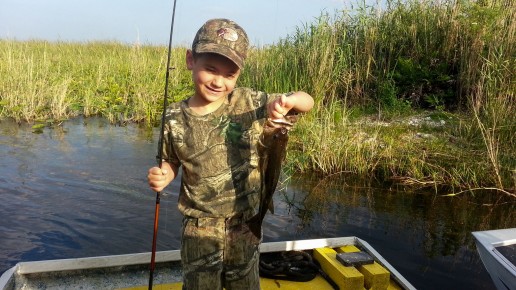
Everglades Airboat Tours
An airboat ride in the Florida Everglades doesn’t have to strictly be for nature lovers. Being one of the world’s largest wetlands areas, South Florida is a great spot for fishing for largemouth bass. Apart from having Florida Gladesmen as your bass guide, the airboat ride itself provides a distinct advantage. Because airboats don’t have prop or trolling motors, they don’t disturb the fish nearly as much!
And let’s not forget about one of, if not THE best reason to see the Everglades by airboat, the amazing sunsets. With South Florida having no mountains, hills, or any topography, and the Everglades having no significantly dense trees or forestry, you’re treated to quite a panoramic view.
The expansive sky is often the perfect stage for colorful, picturesque sunsets. During the Everglades wet season, May to November, late afternoon storm clouds help “scatter” sunlight when dusk comes around, helping to fill the sky with more golden oranges and fiery pinks and reds.
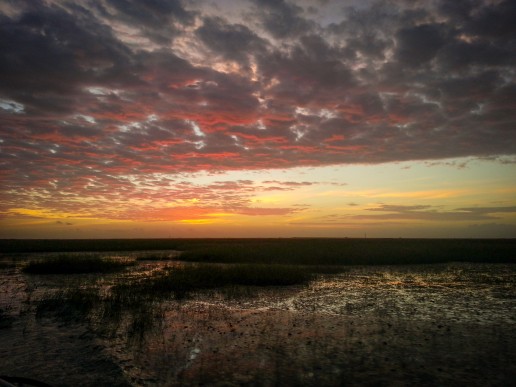
So, when you decide that you’re ready to visit the Everglades, whether it’s for the wildlife, the fishing, or the scenery, you can’t do much better than taking it all in on an Everglades airboat tour.

